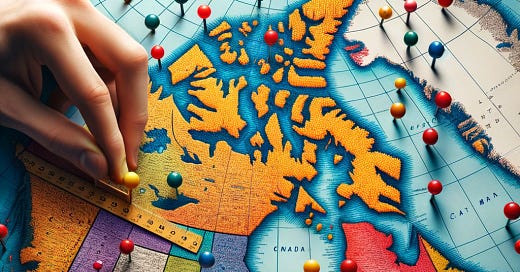Last month the Globe released a list of Canada’s most liveable cities - the top 100 most desirable places to call home.
My immediate reaction: does Canada even have 100 different cities?
One international measure I’ve seen is that a place counts as a city if it has at least 50,000 inhabitants and a density of 1,500 people per square kilometre. Based on data from Stats Canada we have just over 100 municipalities that hit that 50,000 people mark. So, technically yes we do - at least from a population standpoint.
The Globe rankings lowered that threshold to 10,000 inhabitants, which gave them a list of 439 different municipalities to work with. Given our large geographic area and relatively low national population, this lower number allows a few smaller but distinct places to be included.
But I don’t think population alone can define what makes a Canadian city. This is how we end up with Oak Bay – to my mind, an affluent neighbourhood in Victoria rather than its own city – ranking #10 most liveable, and a place like Iqaluit not even making the list of 439. It’s certainly small, but still a capital city. Should that count for something?
What makes a city?
I’m working on developing my own system for defining what makes a Canadian city. Part of the exercise is to explore whether that’s even possible. Can I find the right combination of parameters to deliver a list of places that aligns with my idea of what a city is? Or is it a more intangible quality, something that can’t be measured except by asking the people who live there?
Initial Parameters
Parameters to consider in phase 1:
The big ones: we have 41 Large Urban Centres, so my assumption is at least that many cities should make the cut. In some cases (i.e. Ottawa-Gatineau) there may be multiple distinct cities within each urban centre.
Provincial and territorial capitals: let’s assume each capital city should be included, regardless of scale. Perhaps also the biggest city in each province if that’s not the capital.
Geography/distance: is there a certain distance apart two places have to be before they feel like distinct cities? What role do features like rivers play in defining the geographic edge of one place?
Transportation: how connected is it to Canada and the world? Does it have an airport, a train station, a bus station, access to a major highway?
Higher education: does it have a university, college or other post-secondary institution?
Healthcare: does it have a hospital? A local public health unit?
Leadership: Is there a certain size of local government that makes something a “city”?
Sports: does it have a professional sports team?
Institutions: is it home to cultural institutions like museums, performance venues?
Downtown: is there physical core with a concentration of retail, services, amenities, commercial space? Is there a measurable concentration that counts as a downtown vs a collection of businesses?
Identity: how can we measure the extent to which residents feel like they live in a place with its own identity?
Considerations
I’m basing my explorations on a list of Stats Canada Census Subdivisions as of 2021. I think there’s a whole other way to look at this through an Indigenous lens that doesn’t prioritize things like provincial capital cities. That’s for future exploration.
P.S. This exercise is definitely biased, based largely on my own feelings about whether a municipality seems like a unique place.
Stay tuned for my initial results and feel free to suggest other parameters I haven’t included in my first list.


